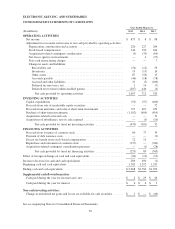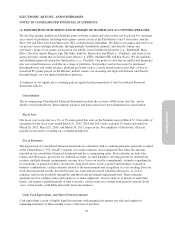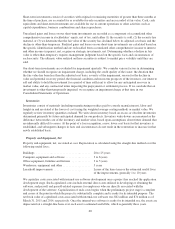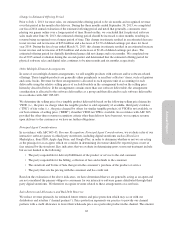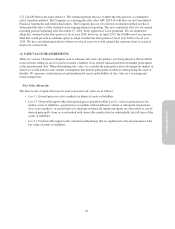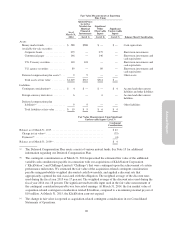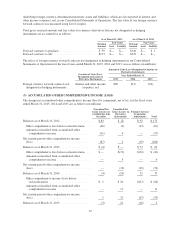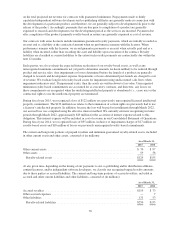Electronic Arts 2015 Annual Report Download - page 137
Download and view the complete annual report
Please find page 137 of the 2015 Electronic Arts annual report below. You can navigate through the pages in the report by either clicking on the pages listed below, or by using the keyword search tool below to find specific information within the annual report.
Annual Report
U.S. GAAP when it becomes effective. The standard permits the use of either the retrospective or cumulative
effect transition method. The Company is evaluating the effect that ASU 2014-09 will have on its Consolidated
Financial Statements and related disclosures. The Company has not yet selected a transition method nor has it
determined the effect of the standard on its ongoing financial reporting. The new standard is effective for annual
reporting periods beginning after December 15, 2016. Early application is not permitted. We are required to
adopt this standard in the first quarter of fiscal year 2018; however, in April 2015, the FASB issued an exposure
draft that would provide us with the option to adopt in either the first quarter of fiscal year 2018 or fiscal year
2019. We have not determined which of these two fiscal years we would adopt if the exposure draft is issued as
final in its current form.
(2) FAIR VALUE MEASUREMENTS
There are various valuation techniques used to estimate fair value, the primary one being the price that would be
received from selling an asset or paid to transfer a liability in an orderly transaction between market participants
at the measurement date. When determining fair value, we consider the principal or most advantageous market in
which we would transact and consider assumptions that market participants would use when pricing the asset or
liability. We measure certain financial and nonfinancial assets and liabilities at fair value on a recurring and
nonrecurring basis.
Fair Value Hierarchy
The three levels of inputs that may be used to measure fair value are as follows:
•Level 1. Quoted prices in active markets for identical assets or liabilities.
•Level 2. Observable inputs other than quoted prices included within Level 1, such as quoted prices for
similar assets or liabilities, quoted prices in markets with insufficient volume or infrequent transactions
(less active markets), or model-derived valuations in which all significant inputs are observable or can be
derived principally from or corroborated with observable market data for substantially the full term of the
assets or liabilities.
•Level 3. Unobservable inputs to the valuation methodology that are significant to the measurement of the
fair value of assets or liabilities.
67



